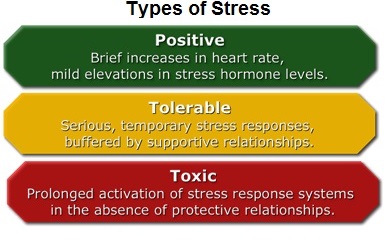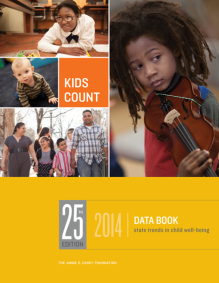“Toxic stress” has come up before in previous posts. It can occur when children are exposed to severe, frequent or prolonged traumatic experiences. Researchers refer to these events as Adverse Childhood Experiences (ACEs).

Source: Center on the Developing Child at Harvard University
When kids lack caring, protective relationships with caregivers, the stress response associated with adverse experiences can disrupt normal brain development. And the cumulative effect of toxic stress can take a toll on a person’s physical and mental health, not just in childhood but throughout life.
Toxic stress during childhood is linked it to unhealthy lifestyles later in life, such as using alcohol to cope with stress, tobacco use, and illicit drug use. A Pediatrics article also states that the “biological manifestations of toxic stress” can cause impairment of the immune system and increase risk factors for heart disease, asthma, and other health problems.
A new Child Trends report shows Oklahoma children to be especially at risk for exposure to (more…)
 The Annie E. Casey Foundation has been tracking child well-being in their annual
The Annie E. Casey Foundation has been tracking child well-being in their annual  Their estimates show the food insecurity rate in the U.S. is 15.9%, down from 16.4% in last year’s report. This means 48,966,000 Americans lack the resources to consistently afford enough nutritious food to live active, healthy lives.
Their estimates show the food insecurity rate in the U.S. is 15.9%, down from 16.4% in last year’s report. This means 48,966,000 Americans lack the resources to consistently afford enough nutritious food to live active, healthy lives. In 2012, in the
In 2012, in the  For more than a century, educators have documented, studied and tried to combat summer learning loss. It has become well known that all children are prone to losing math skills during the summer, and modern studies show the loss of reading skills is also an issue, especially among children from low-income families.
For more than a century, educators have documented, studied and tried to combat summer learning loss. It has become well known that all children are prone to losing math skills during the summer, and modern studies show the loss of reading skills is also an issue, especially among children from low-income families.
 Social Security income
Social Security income Zero to Three is also one of the main sponsors behind an early learning movement called
Zero to Three is also one of the main sponsors behind an early learning movement called  In Oklahoma, it is estimated 49% of households live in a persistent state of financial insecurity, with no little or no savings to cover emergencies. This is up from last year’s estimate of 43.8% of Oklahomans who were considered “liquid asset poor.” Poor showings in areas related to income, assets, healthcare and education contributed to Oklahoma’s overall rank of 31, compared to other states.
In Oklahoma, it is estimated 49% of households live in a persistent state of financial insecurity, with no little or no savings to cover emergencies. This is up from last year’s estimate of 43.8% of Oklahomans who were considered “liquid asset poor.” Poor showings in areas related to income, assets, healthcare and education contributed to Oklahoma’s overall rank of 31, compared to other states.

